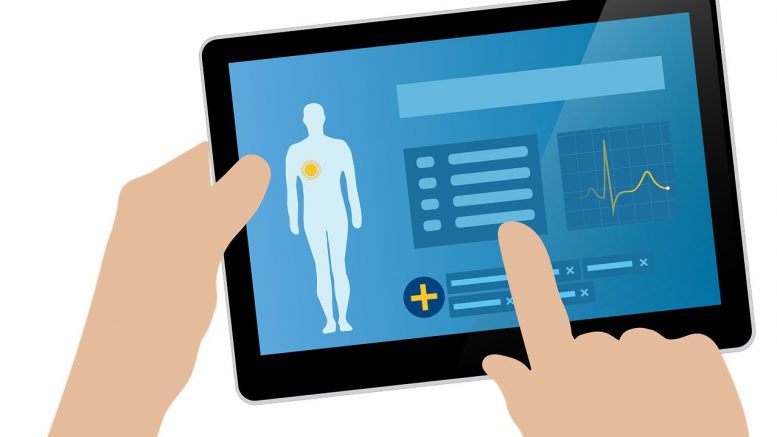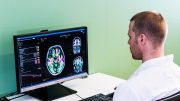More emphasis than ever before is being placed on remote care to help keep patients safe and independent. With that comes an even greater responsibility to make sure that the technology supporting remote pathways responds to patient needs, writes Dr Ewa Truchanowicz, managing director at Dignio.
Phrases like ‘patient centric’ have been around for a long time in the health tech community. But do technologies deployed to support patients always work for user needs? It’s a question suppliers should continually ask.
The pandemic saw an explosion in remote service provision. Indications are that a reliance on such services, often enabled by technology, will continue to grow.
The national Data Saves Lives draft strategy released in June 2021 contained multiple references to how remote monitoring has helped to keep people safe at home during the coronavirus emergency. And in the same month updated guidance from NHS England suggested that trusts and integrated care systems might consider “expanding the use of telemedicine” as they develop net zero green plans.
Rationale behind this momentum for remote care also extends beyond a means to respond to public health and environmental emergencies.
Being able to access professional care support from home can be liberating for patients who want to live independent lives or who don’t want to attend hospital when they can avoid it.
Travelling to hospital can be a stressful experience. Our own customers, who use our remote care platform, have told us about the distress caused for care home residents, for example, who are sometimes hoisted from beds to ambulances. Once in hospital patients can also be at risk of hospital acquired illnesses. And in the case of elderly patients, hospital stays can lead to further loss of independence – for example, it is believed 10 days in a hospital bed can lead to 10 years’ worth of muscle loss for people aged over 80.
Ultimately, technologies that can enable remote care provision, reduce the need for hospital admissions, and promote independence have the potential to be a very good thing for patients. But realising that potential means doing more than using words like ‘patient centric’, it requires technology providers to embrace the concept more fully.
Treating patients as more than an illness
Dignio has been working with a growing number of health and care organisations in the UK, where clinical teams and patients use our remote care platform, along with connected devices in the home, to closely monitor a patient’s status. That might mean using technology to review vital signs, or other important factors related to the individual, which inform professionals when early clinical interventions might be needed.
An important factor in making this work for patients has been to ensure that the platform, which takes the form of an app, can work for the patient across multiple pathways – and that it can be easily adapted to any new pathways by the health or care provider.
This means that if a patient using our system has diabetes and goes on to develop cardiovascular disease, mental ill health, or any number of conditions, then the individual doesn’t need to think about using lots of different applications to help to manage each illness.
A person is not a disease unit or a single diagnosis and they shouldn’t be thought of as such by technology providers; they should be treated as travelling across care, encountering different diagnoses as they do so.
If suppliers are truly interested in person centred care then, with the exception of providing any new devices for the patient, expanding the use of the technology shouldn’t come at extra cost. In other words, suppliers of remote platforms shouldn’t charge more per pathway. Technology enabled services should be built around a person, regardless of the illnesses they develop.
Ensuring that no patient gets left behind
It’s also important to get the integration of pathways right. The biggest danger when setting up a technology supported service, especially where multiple organisations interact with the patient, is the risk of gaps where responsibilities meet, gaps where nobody picks up that something is out of the ordinary for the patient.
When our customers work with us to create digital pathways we map out details of existing care delivery, and their ideal scenarios. Only then should we look at how technology can support the patient, and how the technology will be used in practice, before walking through the digital pathway to ensure nothing, or no one, has been missed.
Usability and listening to patients
Actively listening to our customers in this way is important to ensuring services work; almost as important to listening to patients.
Technology suppliers need to make sure whatever they put in front of patients is designed to meet their needs, and useable.
We have found that connectivity between our platform and devices removes the need for patients to manually input information, and in some cases they might only need to press a single button.
Making technology easy and intuitive can make a big difference, and patients well into their 80s and 90s regularly use the platform.
But we don’t want to be complacent. Too often ideas like co-design are misinterpreted as a tick box exercise. We believe it is important to work with patients on an ongoing basis. When we work with our clients we ask them to tell us what users think, with regular calls in which we elicit patient feedback. It’s no good for clinicians to have tools that patients don’t want to use.
We want our customers to actively be obtaining feedback from patients on an ongoing basis. If you only do this once in the early stages of a project, you risk creating a false sample of people who are actively interested. We want to know about real users, people who don’t speak English, people who find things difficult and who wouldn’t necessarily come to a panel. They are the people using the technology and we want to know if and how they are using it. We continue to evolve the product in response to that feedback.
Impactful for patients
When services like this become genuinely patient centred, the impact can be significant. Our customers have measured very significant reduced hospital admissions for patients in their care. But more than that, they have measured a positive impact on people’s lives – people who feel safe, cared for at home and connected to their care team. One programme in the North West monitoring patients with a wide range of conditions recently reported 100% positive feedback, whilst an Academic Health Science Network recently reported that 99% of patients would recommend an oximetry at home service in which our platform supported Covid-19 patients.
One patient said: “I never felt alone. There was always a friendly voice at the end of the phone. I would recommend the service to anyone. The staff involved with my care replied to messages straight away. This is a service the community needs. The app is so easy to use. So is the equipment. Most importantly the service kept me out of hospital and in my own surroundings.”
Another family member said: “I would just like to say a big thank you for all that you did for my dad last year. The swift response from your team meant he was dealt with very quickly. I strongly believe he may not have done so well had this rapid response team not been in place. 18 months ago my dad had no life and no prospect of a life and was essentially waiting to die. Now he has regained his life.”
This type of feedback from our users is heartening, and we will continue to collect it as we try to deepen our understanding of patient technology interaction.





